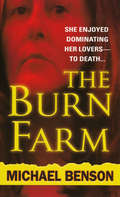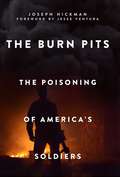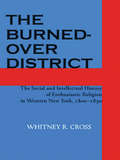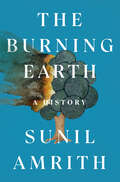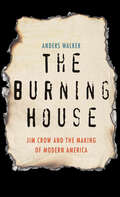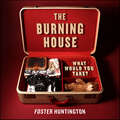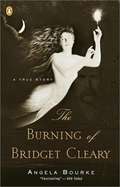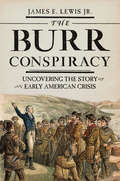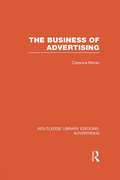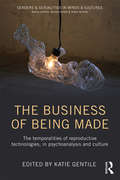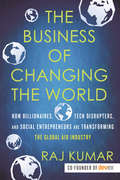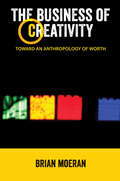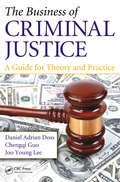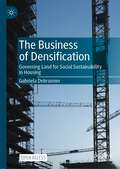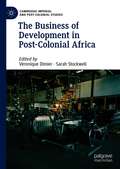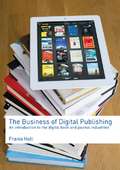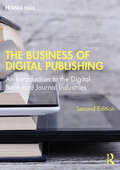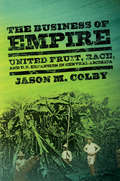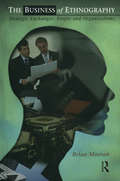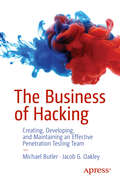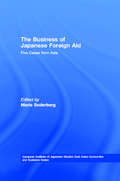- Table View
- List View
The Buried: An Archaeology of the Egyptian Revolution
by Peter HesslerFrom the acclaimed author of River Town and Oracle Bones, an intimate excavation of life in one of the world's oldest civilizations at a time of convulsive changeDrawn by a fascination with Egypt's rich history and culture, Peter Hessler moved with his wife and twin daughters to Cairo in 2011. He wanted to learn Arabic, explore Cairo's neighborhoods, and visit the legendary archaeological digs of Upper Egypt. After his years of covering China for The New Yorker, friends warned him Egypt would be a much quieter place. But not long before he arrived, the Egyptian Arab Spring had begun, and now the country was in chaos.In the midst of the revolution, Hessler often traveled to digs at Amarna and Abydos, where locals live beside the tombs of kings and courtiers, a landscape that they call simply al-Madfuna: "the Buried." He and his wife set out to master Arabic, striking up a friendship with their instructor, a cynical political sophisticate. They also befriended Peter's translator, a gay man struggling to find happiness in Egypt's homophobic culture. A different kind of friendship was formed with the neighborhood garbage collector, an illiterate but highly perceptive man named Sayyid, whose access to the trash of Cairo would be its own kind of archaeological excavation. Hessler also met a family of Chinese small-business owners in the lingerie trade; their view of the country proved a bracing counterpoint to the West's conventional wisdom. Through the lives of these and other ordinary people in a time of tragedy and heartache, and through connections between contemporary Egypt and its ancient past, Hessler creates an astonishing portrait of a country and its people. What emerges is a book of uncompromising intelligence and humanity--the story of a land in which a weak state has collapsed but its underlying society remains in many ways painfully the same. A worthy successor to works like Rebecca West's Black Lamb and Grey Falcon and Bruce Chatwin's The Songlines, The Buried bids fair to be recognized as one of the great books of our time.
The Burn Farm
by Michael BensonFirst, She Seduced Them. . .Sheila LaBarre liked to troll the personal ads and homeless shelters, looking for men whom society had rejected for one reason or another--men she could easily dominate both verbally and sexually. One by one, she invited them to her remote New Hampshire farmhouse, where she engaged them in S&M. But over time, sex gave way to brutal acts of torture as she mercilessly flogged and beat her captives until they confessed to committing unspeakable acts. Once satisfied that they had paid for their sins, Sheila savagely slaughtered them and burned their remains on her farm. . . Then, Humiliated, Tortured, And Killed Them. . . From the disturbing audiotapes Sheila made of her victims' confessions to her own bizarre statements in which she claimed to have returned from the dead to be God's avenger, The Burn Farm takes you behind the scenes of the scandal that rocked a quiet New England town, and into the twisted, depraved mind of a manipulative, cold-blooded murderer. . . Includes 16 Pages of Shocking Photos
The Burn Pits: The Poisoning of America's Soldiers
by Joseph Hickman“There’s a whole chapter on my son Beau… He was co-located [twice] near these burn pits.”–Joe Biden, former Vice President of the United States of AmericaThe Agent Orange of the 21st Century… Thousands of American soldiers are returning from the battlefields of Iraq and Afghanistan with severe wounds from chemical war. They are not the victims of ruthless enemy warfare, but of their own military commanders. These soldiers, afflicted with rare cancers and respiratory diseases, were sickened from the smoke and ash swirling out of the “burn pits” where military contractors incinerated mountains of trash, including old stockpiles of mustard and sarin gas, medical waste, and other toxic material.This shocking work, now for the first time in paperback, includes: Illustration of the devastation in one soldier’s intimate story A plea for help Connection between the burn pits and Major Biden’s unfortunate suffering and death The burn pits’ effects on native citizens of Iraq: mothers, fathers, and children Denial from the Department of Defense and others Warning signs that were ignored and much moreBased on thousands of government documents, over five hundred in-depth medical case studies, and interviews with more than one thousand veterans and active-duty GIs, The Burn Pits will shock the nation. The book is more than an explosive work of investigative journalism—it is the deeply moving chronicle of the many young men and women who signed up to serve their country in the wake of 9/11, only to return home permanently damaged, the victims of their own armed forces’ criminal negligence.
The Burned-over District: The Social and Intellectual History of Enthusiastic Religion in Western New York, 1800–1850
by Whitney R. Cross"Burned-over District was a name applied to a small region, during a limited period of history, to indicate a particular phase of development. It described the religious character of western New York during the first half of the nineteenth century. Time, subject, and area have thus all combined to confine the scope of this book. The study has nevertheless seemed rewarding, mainly because its implications transcend all three limitations. "The meaning expands in a geographical sense because this one area provides a case history in the westward transit of New England culture. Likewise, it is representative as a sample of the change from youth to maturity in a single section affected by continuing westward movement. The subject of religion has broader significance in this period and locality than might at first appear. This section was the storm center, and religious forces were the driving propellants of social movements important for the whole country in that generation. As far as time goes, this book is an illustration of the way in which the minds of one era help to form the destinies of succeeding generations. Neither the causes of the Civil War nor the origins of national prohibition, to cite only two prominent examples, can be thoroughly understood without reference to the Burned-over District."--from the Preface
The Burning Earth: A History
by Sunil AmrithOne of The New Yorker's "Essential Reads" of 2024 A brilliant, paradigm-shifting global history of how humanity has reshaped the planet, and the planet has shaped human history, over the last 500 years. In this magisterial book, historian Sunil Amrith twins the stories of environment and Empire, of genocide and eco-cide, of an extraordinary expansion of human freedom and its planetary costs. Drawing on an extraordinarily rich diversity of primary sources, he reckons with the ruins of Portuguese silver mining in Peru, British gold mining in South Africa, and oil extraction in Central Asia. He explores the railroads and highways that brought humans to new terrains of battle against each other and against stubborn nature. Amrith’s account of the ways in which the First and Second World Wars involved the massive mobilization not only of men, but of other natural resources from around the globe, provides an essential new way of understanding war as an irreversible reshaping of the planet. So too does this book reveal the reality of migration as consequence of environmental harm. The imperial, globe-spanning pursuit of profit, joined with new forms of energy and new possibilities of freedom from hunger and discomfort, freedom to move and explore, has brought change to every inch of the Earth. Amrith relates in gorgeous prose, and on the largest canvas, a mind-altering epic—vibrant with stories, characters, and vivid images—in which humanity might find the collective wisdom to save itself.
The Burning House: Jim Crow and the Making of Modern America
by Anders WalkerA startling and gripping reexamination of the Jim Crow era, as seen through the eyes of some of the most important American writers"Walker has opened up a fresh way of thinking about the intellectual history of the South during the civil-rights movement."—Robert Greene, The NationIn this dramatic reexamination of the Jim Crow South, Anders Walker demonstrates that racial segregation fostered not simply terror and violence, but also diversity, one of our most celebrated ideals. He investigates how prominent intellectuals like Robert Penn Warren, James Baldwin, Eudora Welty, Ralph Ellison, Flannery O&’Connor, and Zora Neale Hurston found pluralism in Jim Crow, a legal system that created two worlds, each with its own institutions, traditions, even cultures. The intellectuals discussed in this book all agreed that black culture was resilient, creative, and profound, brutally honest in its assessment of American history. By contrast, James Baldwin likened white culture to a &“burning house,&” a frightening place that endorsed racism and violence to maintain dominance. Why should black Americans exchange their experience for that? Southern whites, meanwhile, saw themselves preserving a rich cultural landscape against the onslaught of mass culture and federal power, a project carried to the highest levels of American law by Supreme Court justice and Virginia native Lewis F. Powell, Jr.Anders Walker shows how a generation of scholars and judges has misinterpreted Powell&’s definition of diversity in the landmark case Regents v. Bakke, forgetting its Southern origins and weakening it in the process. By resituating the decision in the context of Southern intellectual history, Walker places diversity on a new footing, independent of affirmative action but also free from the constraints currently placed on it by the Supreme Court. With great clarity and insight, he offers a new lens through which to understand the history of civil rights in the United States.
The Burning House: What Would You Take?
by Foster Huntington“Fascinating….Provocative.”—New York Times“Answering this question reveals a great deal about your personality, priorities and interests.”—The Guardian (UK)If your house were on fire, what would you take? Foster Huntington has collected answers to this telling question from thousands of responders all over the world to get to the heart of what it is that people truly value. The result is The Burning House, featuring the best of Huntington’s popular website, TheBurningHouse.com along with a wealth of all-new material. Fascinating and remarkably revealing, The Burning House provides a captivating keyhole into people’s lives, feelings, and innermost thoughts that will especially appeal to the many fans of PostSecret, Not Quite What I Was Planning, Found, and Awkward Family Photos. Illustrated with sometimes moving, often unusual photographs of people’s most prized possessions, The Burning House ingeniously celebrates the differences between human beings around the globe—and the surprising similarities that unite us all.
The Burning of Bridget Cleary: A True Story
by Angela BourkeIn 1895, Bridget Cleary, a strong-minded and independent young woman, disappeared from her house in rural Tipperary. At first her family claimed she had been taken by fairies-but then her badly burned body was found in a shallow grave. Bridget's husband, father, aunt, and four cousins were arrested and tried for murder, creating one of the first mass media sensations in Ireland and England as people tried to make sense of what had happened. Meanwhile, Tory newspapers in Ireland and Britain seized on the scandal to discredit the cause of Home Rule, playing on lingering fears of a savage Irish peasantry. Combining historical detective work, acute social analysis, and meticulous original scholarship, Angela Bourke investigates Bridget's murder.
The Burr Conspiracy: Uncovering the Story of an Early American Crisis
by James E. Lewis Jr.A multifaceted portrait of the early American republic as seen through the lens of the Burr ConspiracyIn 1805 and 1806, Aaron Burr, former vice president of the newly formed American republic, traveled through the Trans-Appalachian West gathering support for a mysterious enterprise, for which he was arrested and tried for treason in 1807. This book explores the political and cultural forces that shaped how Americans made sense of the uncertain rumors and reports about Burr’s intentions and movements, and examines what the resulting crisis reveals about their anxieties concerning the new nation’s fragile union and uncertain republic.Burr was said to have enticed some people with plans to liberate Spanish Mexico, others with promises of land in the Orleans Territory, still others with talk of building a new empire beyond the Appalachian Mountains. The Burr Conspiracy was a cause célèbre of the early republic—with Burr cast as the chief villain of the Founding Fathers—even as the evidence against him was vague and conflicting. Rather than trying to discover the real intentions of Burr or his accusers—Thomas Jefferson foremost among them—James E. Lewis Jr. looks at how differing understandings of the Burr Conspiracy were shaped by everything from partisan politics and biased newspapers to notions of honor and gentility. He also traces the enduring legacy of the stories that were told and accepted during this moment of uncertainty. The Burr Conspiracy offers a panoramic and multifaceted portrait of the United States at a time when it was far from clear to its people how long it would last.
The Business Of Crime: A Documentary Study Of Organized Crime In The American Economy
by Alan A BlockMembers of organized crime syndicates have gained control of key businesses and trade unions through their strategic positions as arbiters of labor-management conflicts and as dispensers of illegal credit. They are managing important sectors of the contemporary marketplace, engaging in activities far more significant than the vice enterprises usually associated with criminal activity. Difficult to access for scholarly study, organized crime is best documented in judicial findings and in legislative reports from criminal investigations and public hearings. In this book, Alan Block has assembled a rich cross section of these reports. Taken together, they illustrate how organized crime has infiltrated important industries and taken control of union pension and welfare funds. Designed for students of criminology, sociology, and deviance, the book provides a comprehensive overview of the business of crime in America today.
The Business Solution to Poverty: Designing Products and Services for Three Billion New Customers
by Mal Warwick Paul PolakRight now the number of people living on $2 a day or less is more than the entire population of the world in 1950. These 2.7 billion people are not just the world’s greatest challenge—they represent an extraordinary market opportunity. By learning how to serve them ethically and effectively, businesses can earn handsome profits while helping to solve one of the world’s most intractable problems. The key is what Paul Polak and Mal Warwick call Zero-Based Design: starting from scratch to create innovative products and services tailored for the very poor, armed with a thorough understanding of what they really want and need and driven by what they call “the ruthless pursuit of affordability.”Polak has been doing this work for years, and Warwick has extensive experience in both business and philanthropy. Together, they show how their design principles and vision can enable unapologetic capitalists to supply the very poor with clean drinking water, electricity, irrigation, housing, education, healthcare, and other necessities at a fraction of the usual cost and at profit margins attractive to investors. Promising governmental and philanthropic efforts to end poverty have not reached scale because they lack the incentives of the market to attract massive resources. This book opens an extraordinary opportunity for nimble entrepreneurs, investors, and corporate executives that will result not only in vibrant, growing businesses but also a better life for the world’s poorest people.
The Business of Advertising (Routledge Library Editions: Advertising)
by Clarence MoranThe Business of Advertising outlines the practice of the advertising trades, some of the more important restrictions on advertising, and a few of the questions which arise in connexion with the business. First published in 1905.
The Business of Being Made: The temporalities of reproductive technologies, in psychoanalysis and culture (Genders & Sexualities in Minds & Cultures)
by Katie GentileThe Business of Being Made is the first book to critically analyze assisted reproductive technologies (ARTs) from a transdisciplinary perspective integrating psychoanalytic and cultural theories. It is a ground-breaking collection exploring ARTs through diverse methods including interview research, clinical case studies, psychoanalytic based ethnography, and memoir. Gathering clinicians and researchers who specialize in this area, this book engages current research in psychoanalysis, sociology, anthropology, philosophy and debates in feminist, queer and cultural theory about affect, temporality, and bodies. With psychoanalysis as its fulcrum, The Business of Being Made explores the social constructions and personal experiences of ARTs. Katie Gentile frames the cultural context, exploring the ways ARTs have become a complex form of playing with time, attempting to manufacture a hopeful future in the midst of growing global uncertainty. The contributors then present a range of varied experiences related to ARTs, including: Interviews with women and men undergoing ARTs; A psychoanalytic memoir of male infertility; Clinical research and work with transgender, gay and lesbian patients creating new Oedipal constellations, the experiences of LBGTQ people within the medical system and the variety of families that emerge; Research on the experiences of egg donors (now central to the business of ARTs) and a corresponding clinical case study of successful egg donation; The experiences of ongoing failure which is the often unacknowledged for ART procedures; How and when people choose to stop using ARTs; A psychoanalytic ethnography of a neonatal intensive care unit populated in part with the babies created through these technologies and their parents, haggard and in shock after years of failed attempts. Full of original material, The Business of Being Made conveys the ambivalence of these technologies without simplifying their complicated consequences for the bodies of individuals, the family, cultures, and our planet. This book will be relevant to clinicians, medical and psychological personnel working in assisted reproductive technologies and infertility, as well as academics working in the fields of sociology, literature, queer and feminist theories and at the intersections of cultural, critical and psychoanalytic theories.
The Business of Changing the World: How Billionaires, Tech Disrupters, and Social Entrepreneurs Are Transforming the Global Aid Industry
by Raj KumarThe new world of results-driven aid that could put an end to extreme povertyDrawing on 2 decades covering global development as editor in chief of Devex, Raj Kumar explores how nontraditional models of philanthropy and aid are empowering the world's poorest people to make progress. Old aid was driven by good intentions and relied on big-budget projects from a few government aid agencies, like the World Bank and USAID. Today, corporations, Silicon Valley start-ups, and billionaire philanthropists are a disrupting force pushing global aid to be data driven and results oriented. This $200 billion industry includes emerging and established foundations like the Chan Zuckerberg Initiative and the Bill and Melinda Gates Foundation. Entrepreneurial startups like Hello Tractor, which offers an Uber-like app for farmers in Nigeria, and Give Directly, whose app allows individuals to send money straight to the phone of someone in need, are also giving rise to this new culture of charity. The result is a more sustainable philosophy of aid that elevates the voices of the world's poor as neighbors, partners, and customers.Refreshing and accessibly written, The Business of Changing the World sets forth a bold vision for how we can use our vote, our voice, and our wallet to turn well-intentioned charity into effective advocacy to transform the world for good. Businesspeople, policymakers, entrepreneurs, nonprofit executives, philanthropists, and aid workers around the world will all be influenced by this transformation.
The Business of Creativity: Toward an Anthropology of Worth (Anthropology & Business)
by Brian MoeranHow does a group of people, brought together because of their diverse skills and professional knowledge, set out to be ‘creative’? How are ongoing tensions between beauty, fame, and money resolved? In The Business of Creativity, Brian Moeran, a leading scholar and writer on the creative industries, takes the sacred relic of creativity out of the crypt and airs it in the ethnographic alley. In contrast to the persistent image of creativity as the spontaneous inspiration of a gifted individual, Moeran shows how creativity emerges from collaborative engagements among people, genres, institutions, materials and technologies. He alternates thick description of work in fashion, advertising, and ceramic art with theoretical innovations that shed new light on the aesthetic, symbolic, and economic dimensions of creativity and the production of worth.
The Business of Criminal Justice: A Guide for Theory and Practice
by Daniel Adrian Doss Chengqi Guo Joo Young LeeThis book represents the manifestation of a new presentation of old perspectives within the discipline of criminal justice. It contains practical considerations of rendering such decisions, it is expected to be an appropriate reference among practitioner personnel.
The Business of Densification: Governing Land for Social Sustainability in Housing
by Gabriela DebrunnerAffordable housing shortage and social exclusion have become severe societal problems across the globe. Increasing numbers of people are suffering from social eviction and displacement due to urban densification, modernization, rising rents, and intense housing commodification. Vulnerable resident groups – such as old-aged or households with children – who often live in old housing stocks planned to be densified, renovated, or upgraded with higher rents, are forced to leave the urban core centers because they can no longer afford to live in central locations, or because they experience unstable or insecure housing conditions. A scenario that is highly unsustainable.So far, studies on densification have mainly considered the process as technological, architectural, or design-based problem (e.g., Kyttä et al., 2013; Broitman & Koomen, 2015; Bibby et al., 2018). However, systematic knowledge on how to implement densification objectives sustainably – regarding economic, environmental, and social aspects – is still lacking. This book tackles this gap by analyzing densification from a governance perspective. Its point of departure is that densification per se does not necessarily lead to sustainable outcomes in terms of social inclusion, cohesion, or community stability. Rather, it politicizes densification by neglecting how the process is planned, implemented, and governed by the actors involved.The book applies an actors-centered neoinstitutionalist political ecology approach to reveal the specific objectives and strategies of actors involved, as well as the socio-political structures (i.e. rules. laws, and policies) that govern densification. Four Swiss in-depth empirical qualitative case studies (Zürich, Basel, Köniz, and Kloten) illustrate the political and legal conditions for success or failure for (un)sustainable implementations of densification. Ultimately, this book advises stakeholders, governments, urban practitioners, and academics on more effective, community-oriented, collective, and decommodified forms of governance to respond to the needs of the public at large rather than simply catering to private individuals and firms. Such governance initiatives entail active municipal land policy approaches outside a purely market-based investment logic that not only limit, but also work with property rights.This is an open access book.
The Business of Development in Post-Colonial Africa (Cambridge Imperial and Post-Colonial Studies)
by Sarah Stockwell Véronique DimierThis collection brings together a range of case studies by both established and early career scholars to consider the nexus between business and development in post-colonial Africa. A number of contributors examine the involvement of European companies (most notably those of former colonial powers) in development in various African states at the end of empire and in the early post-colonial era. They explore how businesses were not just challenged by the new international landscape but benefited from the opportunities it offered, particularly those provided by development aid. Other contributors focus on the development agencies of the departing colonial powers to consider how far these served to promote the interests of European companies. Together these case studies constitute an important contribution to our understanding of both business and development in post-colonial Africa, redressing an imbalance in existing histories of both business and development which focus predominantly on the colonial period. This volume breaks new ground as one of the very first to bring the study of foreign companies and development aid into the same frame of analysis
The Business of Digital Publishing: An Introduction to the Digital Book and Journal Industries
by Frania HallResponding to the growth of digital products and the commercial imperative to build new digital businesses, The Business of Digital Publishing offers a comprehensive introduction to the development of digital products in the book and journal industries. This textbook provides background to the main technological development that have influenced the growth of digital publishing, introducing students to the key terms and concepts that make digital publishing possible. Exploring four key publishing sectors: professional reference, academic, education and consumer, this book explains the context for the digital developments in each area and looks at the growth of new business models and the future challenges faced by each sector. It also addresses the key issues that face the industry as a whole, outlining current debates, such as pricing and copyright, and exploring their impact on the industry through relevant case studies. The Business of Digital Publishing is an invaluable resource for any publishing student looking for a starting point from which to explore the world of digital publishing.
The Business of Digital Publishing: An Introduction to the Digital Book and Journal Industries
by Frania HallThoroughly revised and updated throughout, the second edition of The Business of Digital Publishing provides an essential introduction to the development of digital products in the book and journal industries today. Offering a fundamental overview of the main technological developments that have influenced the growth of digital publishing, the author introduces students to the key terms and concepts that make digital publishing possible. The four key publishing sectors (professional reference, academic, education and trade) are explored in detail, providing students with the technical literacy to understand digital developments and examine the growth of new business models. In this edition, sections have been updated to address the growth of audiobooks, reading apps, metadata, and open access, while original case studies address key issues such as digital-first publishing, EPUB, social media and crowdsourcing. Also covered are the key issues and debates that face the industry as a whole, such as pricing and copyright, and their impact on the industry is explored through relevant case studies. Taken together, the chapters examine the challenges of digital publishing and explore the opportunities it provides to develop new and diverse audiences. The Business of Digital Publishing remains an invaluable resource for any publishing student looking for a starting point from which to explore the world of digital publishing.
The Business of Empire: United Fruit, Race, and U.S. Expansion in Central America (The United States in the World)
by Jason M. ColbyThe link between private corporations and U.S. world power has a much longer history than most people realize. Transnational firms such as the United Fruit Company represent an earlier stage of the economic and cultural globalization now taking place throughout the world. Drawing on a wide range of archival sources in the United States, Great Britain, Costa Rica, and Guatemala, Colby combines "top-down" and "bottom-up" approaches to provide new insight into the role of transnational capital, labor migration, and racial nationalism in shaping U.S. expansion into Central America and the greater Caribbean. The Business of Empire places corporate power and local context at the heart of U.S. imperial history. In the early twentieth century, U.S. influence in Central America came primarily in the form of private enterprise, above all United Fruit. Founded amid the U.S. leap into overseas empire, the company initially depended upon British West Indian laborers. When its black workforce resisted white American authority, the firm adopted a strategy of labor division by recruiting Hispanic migrants. This labor system drew the company into increased conflict with its host nations, as Central American nationalists denounced not only U.S. military interventions in the region but also American employment of black immigrants. By the 1930s, just as Washington renounced military intervention in Latin America, United Fruit pursued its own Good Neighbor Policy, which brought a reduction in its corporate colonial power and a ban on the hiring of black immigrants. The end of the company's system of labor division in turn pointed the way to the transformation of United Fruit as well as the broader U.S. empire.
The Business of Ethnography: Strategic Exchanges, People and Organizations
by Brian MoeranCan an anthropologist help us understand the world of business? Armed with this question, veteran anthropologist Brian Moeran embarks on an in-depth study of cultural production and creative industries in Japan. At once the blundering ethnographer and shrewd observer, Moeran is able to shed light not only on social behavior and human relations in general but, more specifically, on the importance of strategic exchange to all business practices. Moeran's fieldwork, rooted in participant-observation of business life in communities and corporations, leads him to an original theory of how business operates. Culture is not all-powerful, Moeran shows. Instead, social structures strongly influence behavior. At the heart of Moeran's analysis is a firm belief in fieldwork and ethnography - terms much bandied about in business, management and cultural studies, but rarely undertaken in depth. The Business of Ethnography not only provides a useful methodology for people studying or wishing to understand business, but also acts as a clarion call for anthropologists to rethink their discipline beyond traditional fieldwork sites.
The Business of Giving
by Peter GrantThe Business of Giving reviews current thinking and surveys the key techniques any philanthropist or grantmaker should adopt. It also outlines a generic social investment process that can be utilized for all philanthropic or grantmaking programmes. Essential reading for all engaged in or with an interest in philanthropy or civil society in general.
The Business of Hacking: Creating, Developing, and Maintaining an Effective Penetration Testing Team
by Michael Butler Jacob G. OakleyThere is a plethora of literature on the topic of penetration testing, hacking, and related fields. These books are almost exclusively concerned with the technical execution of penetration testing and occasionally the thought process of the penetration tester themselves. There is little to no literature on the unique challenges presented by creating, developing, and managing a penetration testing team that is both effective and scalable. In addition, there is little to no literature on the subject of developing contractual client relationships, marketing, finding and developing talent, and how to drive penetration test execution to achieve client needs. This book changes all that.The Business of Hacking is a one-of-a-kind book detailing the lessons the authors learned while building penetrating testing teams from the ground up, making them profitable, and constructing management principles that ensure team scalability. You will discover both the challenges you face as you develop your team of offensive security professionals and an understanding of how to overcome them. You will gain an understanding of the client’s requirements, how to meet them, and how to surpass them to provide clients with a uniquely professional experience. The authors have spent combined decades working in various aspects of cybersecurity with a focus on offensive cybersecurity. Their experience spans military, government, and commercial industries with most of that time spent in senior leadership positions. What you’ll learn How to handle and ongoing develop client relationships in a high end industryTeam management and how the offensive security industry comes with its own unique challenges. Experience in other industries does not guarantee success in penetration testing.How to identify, understand, and over-deliver on client expectations.How to staff and develop talent within the team.Marketing opportunities and how to use the pentesting team as a wedge for upsell opportunities.The various structures of services available that they may present to their clients. Who This Book Is For This book is written for anyone curious who is interested in creating a penetration testing team or business. It is also relevant for anyone currently executing such a business and even for those simply participating in the business.
The Business of Japanese Foreign Aid: Five Cases from Asia (European Institute of Japanese Studies East Asian Economics and Business Series)
by Marie SöderbergJapan is now the biggest donor of Official Development Assistance (ODA) throughout the world. This study takes a new approach to this subject by focusing on the procedures, methodologies and business mechanisms at the implementation level that influence the process of policy-making in Tokyo. It is also the first study to explore the process of receiving aid, arguing that many of the recipient countries exert considerable influence over the distribution of Japanese foreign aid.

